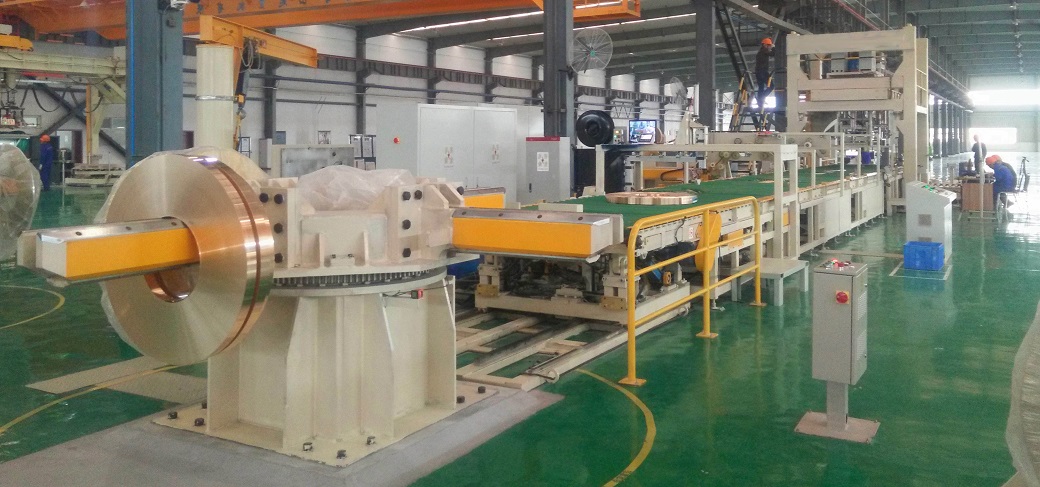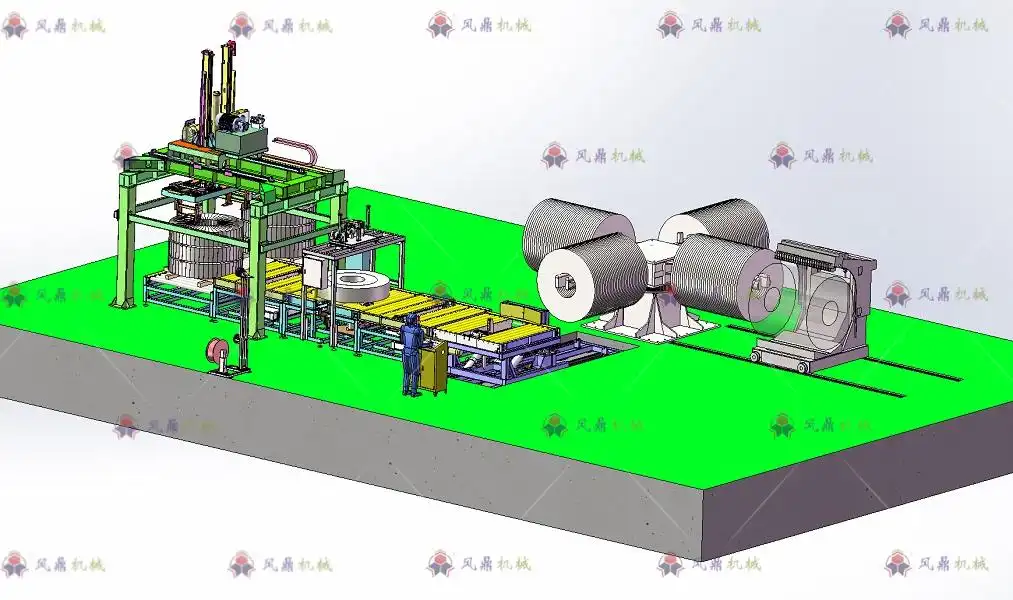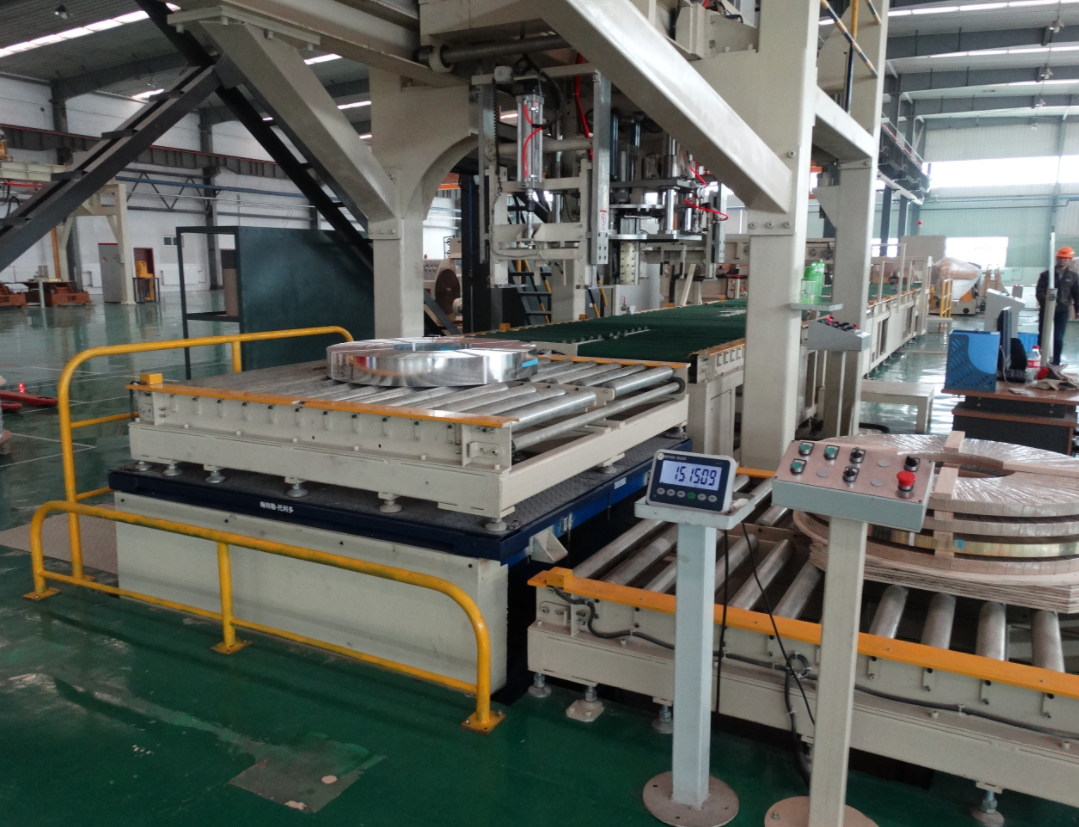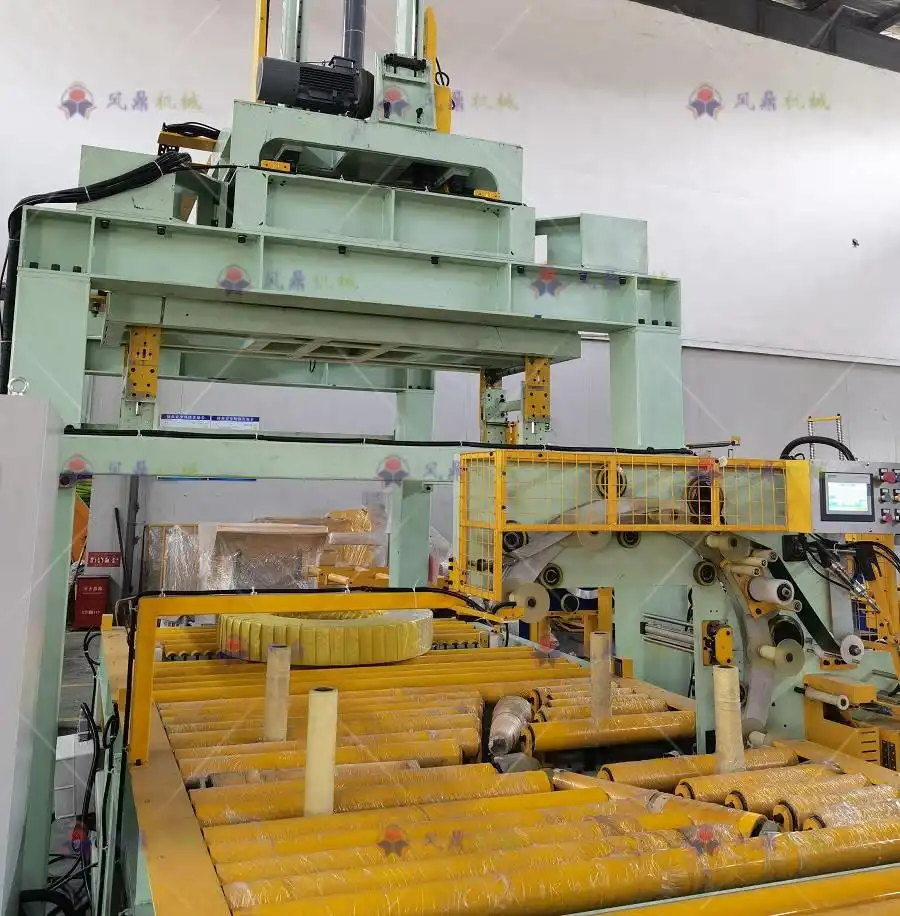A CEO’s Guide: Boosting Steel Mill Productivity with Smart Coil Packing Solutions
Running a steel mill is a constant battle against tight margins. I know this because I've spent my entire career in this industry. You face pressures from all sides. Energy costs are unpredictable. Key equipment gets older and less reliable every year. And the market is always changing. These challenges can create serious bottlenecks at the end of your production line, in the packing and handling area. An old, inefficient packing line doesn't just slow things down. It drives up costs, creates safety risks, and can even damage your final product. This is a problem you cannot afford to ignore. It directly impacts your bottom line.
Smart coil packing solutions boost productivity by transforming your packing area from a cost center into a strategic asset. These systems automate slow and repetitive tasks, which cuts down on labor needs and human error. They integrate seamlessly with your factory's main control systems, creating a smooth, uninterrupted workflow from production to shipping. This automation reduces material waste with incredible precision. It also provides a constant stream of real-time data. This data helps you make smarter decisions, enhance overall efficiency, and increase your plant’s output and profitability.

This all sounds promising, I know. But as a fellow engineer and business owner, I understand you need more than promises. You need to see the practical, real-world benefits. You need to understand exactly how this technology works and how it can be applied to solve the specific challenges you face in your mill. It’s not just about buying a new machine. It's about implementing a solution that delivers a clear return on investment. Let's break down how these systems directly address the biggest pain points for a modern steel mill owner.
How can automated coil packing lines address aging equipment and rising labor costs?
You see it every day. Your older packing equipment is becoming a major liability. It breaks down more often, and finding spare parts is a headache. These unplanned downtimes can halt your entire slitting or rolling line, causing massive disruptions. At the same time, finding and keeping skilled operators for these manual or semi-automatic lines is getting harder and more expensive. You are dealing with rising wages, training costs, and the constant risk of human error or safety incidents.
This situation creates a cycle of inefficiency. A single breakdown doesn't just stop the packing line; it creates a backlog that affects your entire production schedule. Manual packing is not only slow but also inconsistent. One operator might wrap a coil differently than another, leading to variable package quality and potential damage during shipping. This directly hurts your reputation and your profits. The solution is to move away from this reactive model. A modern, fully automated coil packing line is designed for high uptime, consistency, and minimal human supervision.
Automated coil packing lines directly solve the problems of aging equipment and labor dependency. They replace unreliable, high-maintenance machinery with robust, state-of-the-art systems built for 24/7 operation. This dramatically reduces unplanned downtime. By automating the entire process—from coil loading to wrapping, strapping, and labeling—these lines significantly cut down on the need for manual labor. This not only lowers your wage bill but also eliminates inconsistencies and improves workplace safety, leading to predictable output and lower operational costs.

From Breakdown Cycles to Predictive Uptime
I remember my early days as an engineer in a packing machine factory. The plant had a semi-automatic packing line that was over 15 years old. It felt like the maintenance team lived there. They were constantly fixing worn-out belts, faulty sensors, or leaking hydraulic hoses. This is what we call a reactive maintenance model. You wait for something to break, and then you fix it. The problem is, the "waiting" part involves expensive downtime.
A modern automated line changes this completely. It is built with principles of Industry 4.0 in mind.
- IoT Sensors: These systems are equipped with hundreds of sensors that monitor everything in real-time. They track motor temperature, vibration, cycle counts, and pneumatic pressure.
- Predictive Alerts: This data is fed into a central PLC and HMI. The system can predict when a component is nearing the end of its life. It will generate an alert for your maintenance team, like "Motor bearing #3 has reached 8,000 hours of operation. Recommend inspection and replacement at next scheduled stop." This allows you to schedule maintenance during planned shutdowns, moving from reactive to predictive maintenance. This single shift is a huge step toward achieving 95% or higher equipment uptime.
The Real Cost of Old Machinery vs. New Automation
The cost of an old machine is not just its repair bills. It's a much bigger number. It includes lost production, labor inefficiency, and safety risks. A fully automated system addresses all these hidden costs. Let's compare them directly.
| Metric | 15-Year-Old Semi-Automatic Line | Modern Fully Automatic Line |
|---|---|---|
| Uptime | 75-85% (frequent unplanned stops) | 95%+ (predictive maintenance) |
| Labor Required | 2-3 operators per shift | 1 supervisor for multiple lines |
| Maintenance | Reactive, high cost for emergency repairs | Predictive, scheduled, lower cost |
| Packing Speed | 3-4 minutes per coil | 1-2 minutes per coil |
| Consistency | Varies by operator | 100% consistent and repeatable |
| Safety | Higher risk of manual handling injuries | Minimal human interaction, high safety |
| Data Tracking | Manual logs, often inaccurate | Automatic, real-time data for MES |
Investing in an automated line is not an expense. It's an investment in operational stability and a direct strategy to reduce your cost per ton produced. It frees your skilled workers to focus on more valuable tasks than just repetitive packing.
What role does a smart packing line play in reducing energy consumption and material waste?
As a steel mill owner, you know that energy and raw materials are two of your biggest and most volatile costs. A small percentage change in the price of electricity or steel strapping can have a massive impact on your monthly profit and loss statement. You are constantly looking for ways to reduce consumption. But many mills overlook the packing area as a source of significant savings. Older packing machines are often inefficient. They use oversized motors that run constantly, and their designs lead to a surprising amount of wasted wrapping film and strapping.
This waste, though small on a per-coil basis, adds up to a staggering amount over a year of production. Think about it. An operator using "a little extra" film on every coil to be safe. A strapping machine that doesn't apply the perfect tension, requiring a second strap. Old hydraulic power packs that consume massive amounts of electricity even when the machine is idle. These are the silent killers of your profit margin. A smart packing line is engineered from the ground up to eliminate this waste. It is designed for absolute efficiency, using precisely the right amount of energy and material needed for the job, and no more.
A smart packing line reduces energy consumption by using modern, high-efficiency servo motors instead of older, power-hungry hydraulic or pneumatic systems. It minimizes material waste by using sensors to measure each coil and then calculating the exact amount of wrapping film and strapping needed. This precision directly lowers your operational costs, reduces your environmental footprint, and helps you meet your goal of reducing unit energy consumption.

The Power of Precision Engineering
The difference in energy use between old and new technology is dramatic. Let’s look at the core systems.
- Old Technology: Hydraulic/Pneumatic Power: Many older machines rely on a central hydraulic power pack. This unit has a large electric motor that runs continuously to keep the hydraulic fluid pressurized, even when the machine is not moving. This is like leaving your car engine running at a red light. It wastes a tremendous amount of energy. Compressed air systems are similarly inefficient, with leaks being a common and costly problem.
- New Technology: All-Electric Servo Drives: A modern smart packing line uses individual servo motors for each movement. A servo motor uses energy only when it is performing an action, like rotating the coil or moving a strapping head. When it's not moving, its energy consumption is near zero. This on-demand energy usage can cut the machine's total electricity consumption by 50% or more compared to an older hydraulic model. This is a direct contribution to your goal of a 10% reduction in unit energy consumption.
Material Savings by Design
This is where the "smart" part of the solution truly shines and delivers a fast return on investment. A traditional packing process is often based on guesswork. An operator might be told to wrap a coil for 45 seconds, regardless of its size.
A smart line works differently.
- Automatic Measurement: As the coil enters the packing station, laser or ultrasonic sensors instantly measure its outer diameter, inner diameter, and width.
- Precise Calculation: This data is sent to the machine's PLC. The PLC has a pre-programmed recipe for that specific coil type or customer. It calculates the exact length of wrapping film needed to achieve the required number of layers and overlap.
- Perfect Application: The wrapping shuttle then applies that exact amount of material and cuts it. There is no guesswork and no waste.
Let's do some simple math. If a smart line saves you just 1.5 meters of stretch film per coil compared to manual wrapping, and you pack 500 coils per day, that's 750 meters of film saved daily. Over a year, that's over 270 kilometers of film. That is a significant, measurable cost saving that goes directly to your bottom line. The same principle applies to steel or PET strapping, ensuring the perfect length is used every time.
| Feature | Old Packing Line | Smart Packing Line |
|---|---|---|
| Energy System | Continuous-run Hydraulic/Pneumatic | On-demand Servo-electric |
| Power Consumption (Idle) | High | Very Low |
| Wrapping Material Usage | Manual estimate, high variability | Sensor-measured, precise calculation |
| Material Over-usage | 5-10% common | <1% |
| Waste Generation | High (offcuts, excess material) | Minimal |
This focus on efficiency isn't just good for your budget; it's also good for meeting increasingly strict environmental regulations. Reducing waste and energy use is a powerful story to tell your customers and regulators.
How do integrated packing solutions support digital transformation and data-driven decisions?
As a forward-thinking CEO, you understand that data is the key to future growth. You are likely implementing systems to monitor your furnaces, rolling mills, and slitting lines. You want complete visibility of your entire production process. But often, the packing and shipping area remains a "black box." You know how many tons go in, and you know how many go out, but you lack detailed, real-time information about the process in between. What is the true cycle time per coil? How much packing material was used for that specific order? Which shift is the most efficient?
This lack of visibility is a major roadblock to achieving your digital transformation goals. You cannot optimize a process that you cannot measure. Without data from your packing line, it's impossible to identify hidden bottlenecks or accurately calculate the final cost of your product. This information gap prevents you from making truly data-driven decisions to improve efficiency and profitability. An integrated packing solution is the answer. It is designed not as a standalone machine, but as an intelligent data node that connects seamlessly into your factory's digital ecosystem.
Integrated packing solutions support digital transformation by communicating directly with your plant's Manufacturing Execution System (MES) or ERP platform. This connection allows for a two-way flow of information. The packing line receives order details and specifications automatically, and in return, it sends back real-time data on production throughput, material consumption, cycle times, and machine status. This turns your packing area from an invisible process into a transparent, measurable, and optimizable part of your smart factory.

Beyond Automation: The Power of Integration
Simple automation makes a machine run by itself. True integration makes it part of a larger, intelligent system. Here’s how it works in practice, turning your goal of total production visualization into a reality.
- Receiving the Order: Your slitting line finishes a set of coils for a customer order. The coil data (Coil ID, weight, dimensions, customer name, required packing type) is already in your MES.
- Seamless Handover: As the coil is transferred to the packing line, a barcode scanner or RFID reader identifies it. The packing line's PLC immediately communicates with the MES, requesting the packing instructions for that specific Coil ID.
- Automatic Recipe Selection: The MES sends the data back: "This coil requires waterproof VCI paper, a full wrap with 3 layers of stretch film, and four radial steel straps." The packing line automatically adjusts all its settings—the wrapping speed, the strapping tension, the label information—without any human input.
- Closing the Loop: Once the coil is packed, weighed, and labeled, the packing line sends a confirmation message back to the MES. This message includes: "Coil ID XYZ is complete. Cycle time: 1 minute 42 seconds. Material used: 2.1kg of film, 12.4 meters of strapping. Final weight: 5,021 kg."
Data That Drives Business Goals
This closed-loop data flow is incredibly powerful. It provides the concrete information you need to achieve your highest-level strategic goals.
- To Increase Capacity Utilization to 95%: By analyzing the real-time cycle time data from the packing line, you can compare it to the output of your slitting line. If the packing line is becoming a bottleneck, you have the data to prove it and can adjust production schedules or justify a second packing line. You can identify and fix the small delays that add up over a shift.
- To Lower Operating Costs by 8%: The precise tracking of material consumption per coil, per order, or per shift gives you unprecedented control over your inventory. You can use this data to negotiate better prices with your material suppliers because you have exact usage figures. You can also pinpoint which products are more or less profitable to pack.
- To Advance Digital Transformation: This integration is the final, critical piece of your smart factory puzzle. Your production dashboard can now show the status of every single coil, from the time it's made to the moment it's loaded onto a truck. This complete visibility is the ultimate goal of any digital transformation initiative in manufacturing.
Why is a strategic partnership more valuable than just buying a machine?
You've made major capital investments before. You know the process. You get quotes from several vendors, compare the technical specifications, and negotiate the price. But buying a critical piece of equipment like a fully automated packing line is different. The machine itself is complex, and its integration into your existing workflow is vital for success. A wrong choice or a poor installation can lead to years of headaches. What happens if the machine you bought from a catalogue doesn't quite fit your plant layout? What about training your team? Who do you call when you need a critical spare part, and your line is down?
The risk is that you end up with a machine, but not a solution. A vendor sells you what they have. Their responsibility often ends once the machine is delivered. If you face challenges with integration, optimization, or future upgrades, you might be on your own. This is a massive liability for a business leader like you, who needs reliability and long-term stability. This is why you should not be looking for a supplier. You need a strategic partner who is just as invested in your success as you are.
A strategic partnership is more valuable because the relationship extends far beyond the initial sale. It means you are working with a team of experts who provide a total solution. This starts with a deep analysis of your needs to design a custom machine. It includes hands-on support during installation and comprehensive training for your staff. Most importantly, it involves long-term support, proactive advice, and a shared commitment to ensuring your investment delivers maximum value for years to come.

My Journey: From Engineer to Partner
This philosophy is at the core of why I founded SHJLPACK. I didn't start my career as a business owner. I started as an engineer on the factory floor. I spent years working with packing machinery, operating it, and fixing it when it broke. I saw firsthand the frustration and the massive costs that occurred when a supplier sold my company a machine and then disappeared. We were left trying to figure things out on our own, modifying a machine that wasn't quite right for our process, and struggling to get support.
I experienced the pain of production halts caused by a lack of a single spare part. I knew there had to be a better way. When I started my own company, my mission was clear. I didn't want to just sell packing machines. I wanted to build the solutions I wish my old company had been able to buy. I wanted to be a partner to my clients, not just another vendor. My success came from helping my clients succeed, from seeing their businesses grow because we provided a solution that truly solved their problems. This journey from employee to owner taught me that the value is not in the steel of the machine, but in the expertise and support that come with it.
What a True Partnership Looks Like
When you work with a partner, the process looks very different from simply buying a machine.
- Deep Discovery and Customization: A partner doesn't start with a brochure. We start with questions. We come to your plant. We analyze your current workflow, your space constraints, your coil types, and your strategic goals. We then design a solution that is tailored specifically for your mill. We recently designed a line for a client in Mexico where a standard layout wouldn't fit. We engineered a custom U-shaped configuration that integrated perfectly into their limited space, a solution a standard vendor couldn't offer.
- On-Site Installation and Training: Our team is there with you during installation and commissioning. We don't leave until the line is running smoothly and meeting the agreed-upon performance targets. We then provide extensive, hands-on training for both your operators and your maintenance crew, empowering them to own the new system.
- Proactive Long-Term Support: Our relationship continues long after the installation. We are your resource for technical questions, spare parts, and ongoing optimization. We can help you navigate new challenges. For example, when a client faced new environmental regulations, we worked with them to test and validate a new, more eco-friendly wrapping film, ensuring they remained in compliance without sacrificing package quality.
- Future-Proofing Your Investment: Your business will grow and change. A partner helps you plan for that. We design our systems with modularity in mind, so they can be upgraded or expanded in the future. We can be your consultant, offering advice on how to adapt your packing operations to meet new market demands or technological opportunities. This forward-looking approach is the essence of a true strategic partnership.
Conclusion
Investing in a smart coil packing solution is not just an equipment upgrade. It is a strategic move toward higher productivity, lower costs, and a more resilient, future-proof steel mill.





